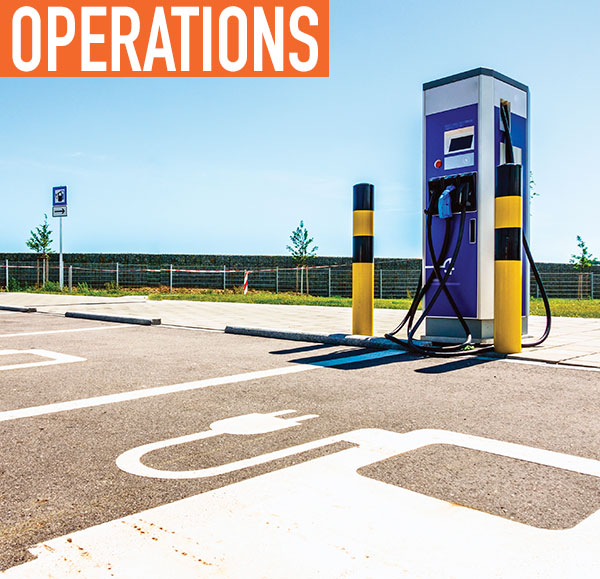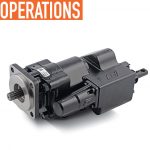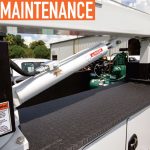Have you ever considered renting part or all of your truck fleet in an effort to go green? If not, it’s worth the consideration. As you probably know, there are several ways to achieve a green fleet including regular preventive maintenance, driver training, route optimization, and vehicle replacement. However, did you know there’s another strategy to take your fleet to the next “green” level? You can rent it.
While renting your fleet is not the only fleet procurement option, it is, however, the greenest. Traditionally, organizations purchase or lease their fleet. But many of those same organizations found the benefits that come with renting, one of which is a greener fleet.
Three reasons top the list of why renting can make your fleet greener:
1. NEW AND LESS
Typically with renting, fleets acquire the newest vehicles on the market. Newer vehicles are naturally designed to garner more miles per gallon, thus reducing overall emissions. Additionally newer vehicles are held to a higher emissions standard, especially in the United States. According to the United States Environmental Protection Agency (EPA), vehicles are 98-99% cleaner today (in terms of smog-related pollutants) than they were in the late 1960s.
When purchasing a fleet, most companies buy new, keep the vehicles for a minimum of five years, then sell the vehicles and purchase new ones. Vehicles that are five years old tend to lag behind, sometimes significantly, in regards to efficiency and technology.
2. NEWER TECHNOLOGY
New vehicles have the most cutting-edge technology including the latest telematics, GPS systems, safety features, and adaptive equipment.
Telematics
More and more fleet trucks are built with technology that supports telematic systems. When using the latest telematics, you can reduce idle time in your vehicles by capturing excessive idling in each of your drivers. How does idling affect the environment? According to the EPA, needless idling wastes as much as half a gallon of fuel each hour. This can add up quickly for larger fleets with 50 trucks or more. Not only is fuel wasted with excessive idling, there are more greenhouse gases (GHG) emitted into the environment.
Using the most recent telematics system also helps identify unauthorized vehicle use including after-hour use or out-of-territory use. This is another instance where fuel is wasted unnecessarily.
Telematics systems also help promote green driving behavior. Fleet managers receive notifications when their drivers accelerate too quickly, speed, or stop too fast. They can identify the areas that need the most improvement and then teach the drivers to improve their driving.
Lastly, telematics systems help improve fuel efficiency and reduce harmful emissions through engine diagnostic tools. Telematics systems remind fleet managers and drivers about upcoming preventive maintenance on each vehicle in the fleet to help coordinate service times to decrease disruptions in operations. Even further, telematics systems help identify issues within vehicles that need repair. This helps avoid additional damage to the vehicle and the environment. More emissions and lower mpg are typically characteristics of vehicles with engine issues.
GPS
Using the most recent GPS in a new truck allows you to better optimize your routes which, in turn, reduces the impact on the environment and will lower fuel costs as well.
Safety Features
Truck manufacturers are continuously tasked to increase the safety in their vehicles. Thus, the latest models have the most advanced safety features, specifically driver assist technology and adaptive equipment.
Driver assist technology, including forward collision warning, blind spot recognition, and automatic emergency braking, exploded within the past decade and is key in preventing accidents and saving lives. According to the National Highway Traffic Safety Administration (NHTSA), research shows that most vehicle accidents are tied to human error. So how does this relate to green fleets? Reducing the number of traffic accidents lowers the number of gas and fluid leaks, not to mention the number of totaled vehicles sent to the landfill.
Adaptive Equipment
Basic cruise control can assist in lowering fuel costs and emissions. But what about “adaptive” cruise control (ACC)? Adaptive cruise control is an intelligent form of basic cruise control. The difference? It automatically slows the vehicle and speeds it up to ensure pace is kept with the vehicle in front. ACC reduces the number of times your brakes are engaged and your throttle is pressed.
3. SHORTER LIFECYCLE
Engines in newer vehicles are more efficient and have less wear and tear than engines in older vehicles. When renting a truck, you’ll typically rent for periods between six and 12 months. Then you’ll turn it in at the end of the period. When another project comes up, you simply rent another one (which at that time will be even newer). Whereas when purchasing vehicles, most organizations hold them for a minimum of five years, which means the engines’ efficiency has had time to decline.
Next time “green fleet” discussions come up at your organization, put renting at the top of the list.
ABOUT THE AUTHOR
With more than 17 years in marketing, including digital and traditional, Jan Eliason is currently the director of marketing at Flex Fleet Rental, a company that offers 4×4 light-duty truck rentals for project-based organizations. Find out more, visit www.flexfleetrental.com.
MODERN WORKTRUCK SOLUTIONS:
OCTOBER 2019 ISSUE
Did you enjoy this article?
Subscribe to the FREE Digital Edition of Modern WorkTruck Solutions magazine.





